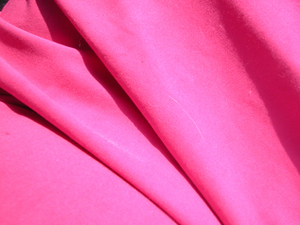When making arrangements for you, one of the first things you must decide is the colors of your wedding. For a truly beautiful wedding, it is best to find colors that coordinate well together and will be pleasing on the eyes. I once did a wedding where the bride insisted that the colors be fuchsia, pink, silver, and green. It is in style these days where the bridesmaids were the same dress in different colors. This concept doesn’t really mesh when arranging flowers.
Another thing to remember when choosing colors is the season in which the wedding will be performed. Pastels or really bright colors don’t really work well in a winter wedding. Of course, you should want your wedding to be something special for you since it is your day. Although fuchsia, pink, silver and green may be your favorite colors, remember your guests and their eyes are also in consideration. Three colors should be the maximum amount of coordinating colors.
A way to tell the relationship between colors is to look at a standard color wheel. The twelve basic colors are set by how they relate to each other. The primary colors are red, blue and yellow. Orange, green, and violet are secondary colors because they are made by mixing equal amounts of two of the primary colors. For example, we all remember the ‘yellow and blue makes green’ from kindergarten. Then there are tertiary colors which are made by mixing one primary color and one secondary color together.
The next thing to know is the warm colors from the cool colors. The warm colors are red, orange and yellow tend to dominate the color arrangements. The cool colors like blue, green and violet calms the arrangement. They are more in the background while warm colors stand out.
When deciding on your wedding floral colors go with your first choices and see how they fall on the color wheel. If you don’t have any idea as of yet, the color wheel will give you help on seeing how colors coordinate. A clear way to determine is to choose one of these color schemes:
Monochromatic–a color scheme uses different incarnations of the same color. For example, on a wedding I did, the bride choose different shades of blue florals, with different varieties of flowers, for her flower arrangement. This blended well with the ivory background decorations and stayed with her colors of ivory and blue.
Analogous–a color scheme of colors that are placed next to each other on the color wheel. Another wedding chose to use blue and violet together in an arrangement.
Complementary–a color scheme that uses colors opposite of each other on the color wheel. The most famous use of a complementary color scheme is the pink and green used by the AKA sorority.
Triadic–the color scheme that uses three colors that are the same distance apart on the color wheel. Blue, yellow, and green together are an example of a triadic color scheme.
Colors are very important when putting together a faux floral arrangement. Although colors and the floral arrangement is a serious decision to make, but don’t stress too much over it. If you aren’t using a wedding planner to help you choose colors, go into a local flower shop and get ideals from some of their arrangements or ask about color selections.



